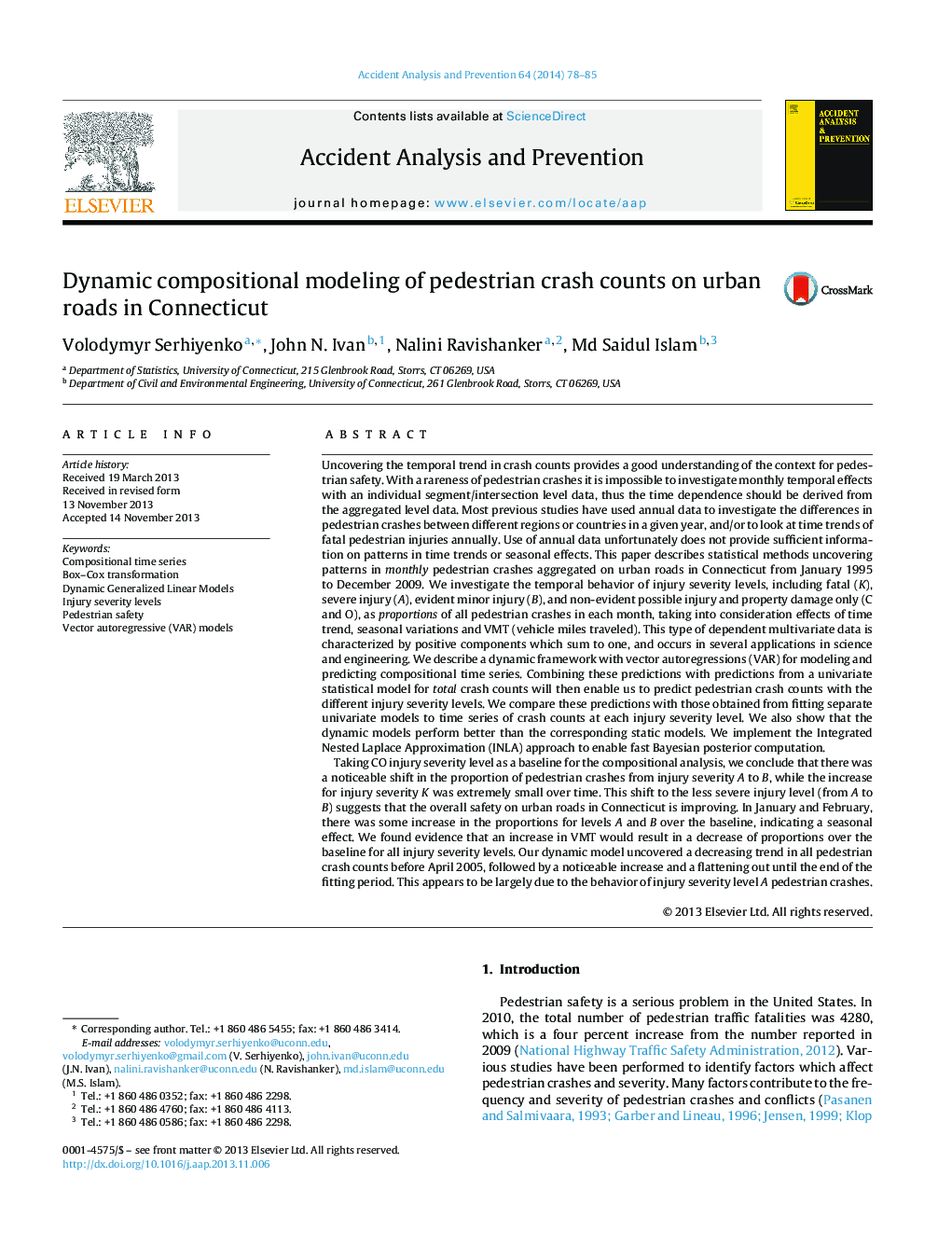| کد مقاله | کد نشریه | سال انتشار | مقاله انگلیسی | نسخه تمام متن |
|---|---|---|---|---|
| 572393 | 1452933 | 2014 | 8 صفحه PDF | دانلود رایگان |
• We model proportions of injury severity levels as compositional time series.
• There was a noticeable shift in proportions from injury severity level A to level B.
• In January and February, proportions increased for levels A and B over level CO.
• An increase of VMT decreased proportions for all injury levels over the baseline.
• The trend for total pedestrian crashes appeared to mimic changes in level A crashes.
Uncovering the temporal trend in crash counts provides a good understanding of the context for pedestrian safety. With a rareness of pedestrian crashes it is impossible to investigate monthly temporal effects with an individual segment/intersection level data, thus the time dependence should be derived from the aggregated level data. Most previous studies have used annual data to investigate the differences in pedestrian crashes between different regions or countries in a given year, and/or to look at time trends of fatal pedestrian injuries annually. Use of annual data unfortunately does not provide sufficient information on patterns in time trends or seasonal effects. This paper describes statistical methods uncovering patterns in monthly pedestrian crashes aggregated on urban roads in Connecticut from January 1995 to December 2009. We investigate the temporal behavior of injury severity levels, including fatal (K), severe injury (A), evident minor injury (B), and non-evident possible injury and property damage only (C and O), as proportions of all pedestrian crashes in each month, taking into consideration effects of time trend, seasonal variations and VMT (vehicle miles traveled). This type of dependent multivariate data is characterized by positive components which sum to one, and occurs in several applications in science and engineering. We describe a dynamic framework with vector autoregressions (VAR) for modeling and predicting compositional time series. Combining these predictions with predictions from a univariate statistical model for total crash counts will then enable us to predict pedestrian crash counts with the different injury severity levels. We compare these predictions with those obtained from fitting separate univariate models to time series of crash counts at each injury severity level. We also show that the dynamic models perform better than the corresponding static models. We implement the Integrated Nested Laplace Approximation (INLA) approach to enable fast Bayesian posterior computation.Taking CO injury severity level as a baseline for the compositional analysis, we conclude that there was a noticeable shift in the proportion of pedestrian crashes from injury severity A to B, while the increase for injury severity K was extremely small over time. This shift to the less severe injury level (from A to B) suggests that the overall safety on urban roads in Connecticut is improving. In January and February, there was some increase in the proportions for levels A and B over the baseline, indicating a seasonal effect. We found evidence that an increase in VMT would result in a decrease of proportions over the baseline for all injury severity levels. Our dynamic model uncovered a decreasing trend in all pedestrian crash counts before April 2005, followed by a noticeable increase and a flattening out until the end of the fitting period. This appears to be largely due to the behavior of injury severity level A pedestrian crashes.
Journal: Accident Analysis & Prevention - Volume 64, March 2014, Pages 78–85
